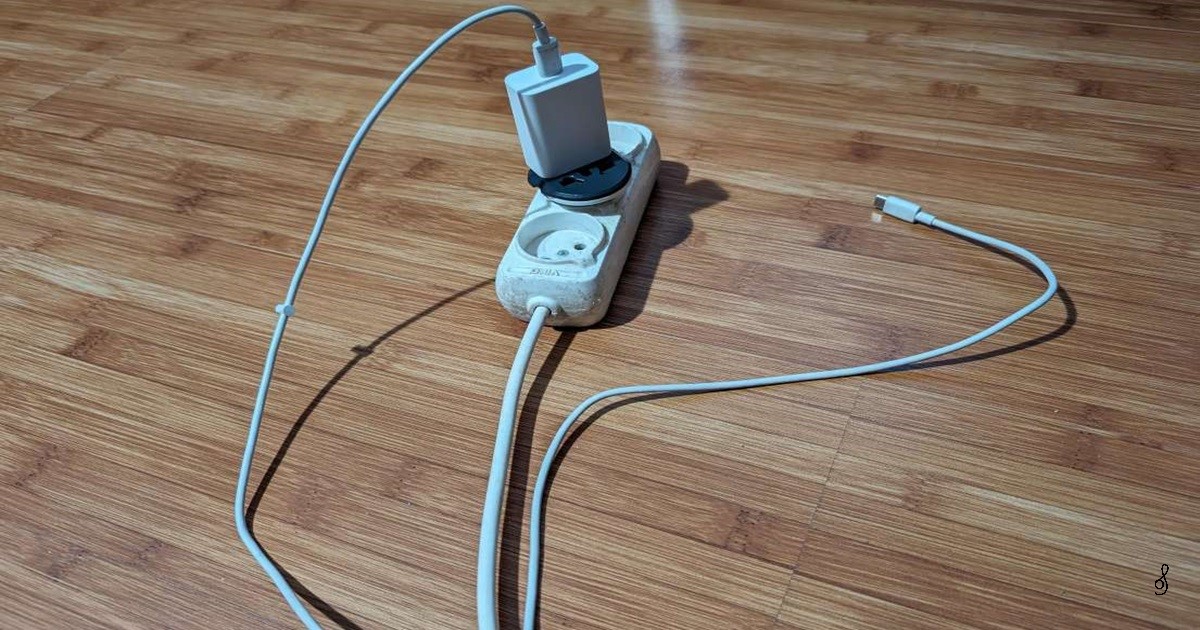HT7. Never leave a charger in an outlet without your phone: I’ll expose the three major reasons
In today’s fast-paced world, we rely on our smartphones for almost everything – communication, entertainment, navigation, and even work. Given how important these devices have become in our daily lives, charging them properly is crucial. But what happens when you leave a charger plugged into an outlet without your phone? Is it harmless or could it cause problems? In this article, I’ll expose the three major reasons why you should never leave a charger in the outlet without your phone.

1. Energy Waste and Environmental Impact
One of the most obvious but often overlooked consequences of leaving your charger plugged in is the unnecessary energy consumption. Even when your phone isn’t connected, the charger still draws power from the outlet, albeit in a smaller amount. This phenomenon, known as “phantom” or “vampire” energy, results in power being consumed by the charger with no real purpose. Over time, this leads to wasted energy, which contributes to higher electricity bills and a larger carbon footprint.
Though each charger may only draw a small amount of power, when multiplied by the number of devices in a household or workplace, this waste can add up. This small habit might seem insignificant, but every little bit counts in terms of energy conservation, and leaving chargers unplugged can make a real difference in reducing your environmental impact.

2. Potential Safety Hazards
Leaving chargers plugged in without a phone connected can lead to a range of potential safety hazards. The charger’s power adapter, when left plugged in, continues to receive electricity and may overheat. This can happen due to various reasons, such as poor quality chargers, faulty wiring, or simply prolonged usage. Overheating can lead to the charger malfunctioning, catching fire, or even causing electrical shorts in the outlet.
In the worst-case scenario, if you leave a charger plugged in for an extended period, it could lead to a fire hazard, especially if the outlet is already compromised or the charger itself is damaged. Electrical safety experts recommend unplugging devices when not in use to mitigate these risks and ensure that your home or office remains safe.

3. Damage to Your Charger and Devices
Leaving a charger plugged into the wall for extended periods can also damage the charger and your devices. While modern chargers are typically designed to be robust, repeated heating and cooling cycles from being plugged in can cause wear and tear. The internal components, such as the transformer or the capacitor, might degrade, reducing the charger’s efficiency and lifespan.
Even worse, some low-quality or non-certified chargers could potentially cause issues for your phone or other devices. These chargers might not properly regulate the voltage and current that flows into your device, risking damage to the internal battery or even causing malfunctioning of your phone. Long-term exposure to improper charging conditions could reduce the efficiency of your phone’s battery and result in quicker drainage or slower charging over time.

Conclusion
In conclusion, leaving a charger plugged into the outlet without your phone is a seemingly small habit with a host of unintended consequences. From wasted energy and unnecessary environmental impact to potential safety hazards and damage to your devices, it’s clear that unplugging your charger when not in use is a simple but important step. By being mindful of this, you not only protect your phone and charger but also contribute to a more energy-efficient and safer living environment. So, next time you’re done charging, make sure to unplug your charger—it’s a small act that benefits you, your devices, and the planet!











Post Comment